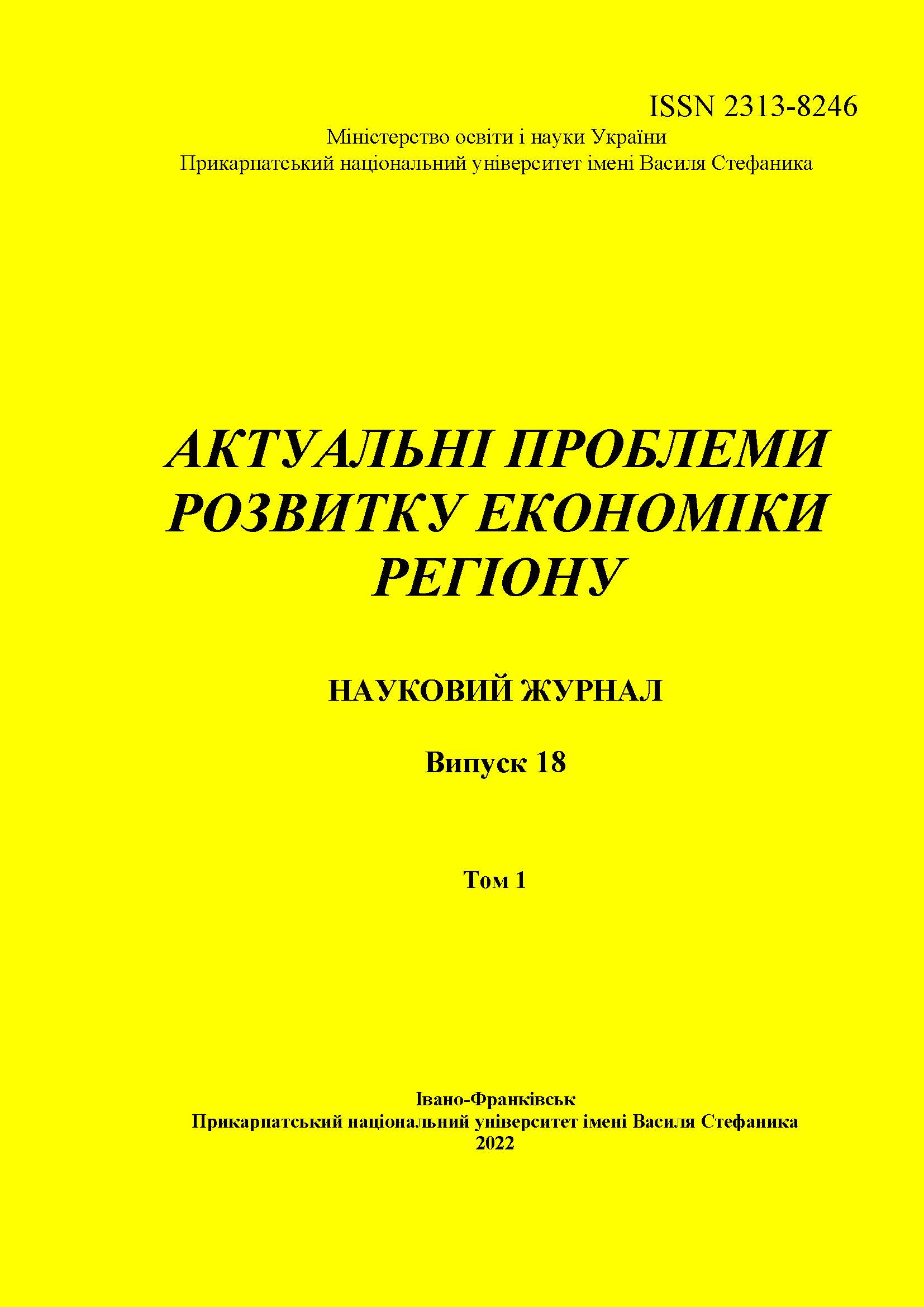MANAGEMENT OF FINANCIAL RESOURCES OF THE ENTERPRISE IN A CRISIS
DOI:
https://doi.org/10.15330/apred.1.18.60-67Keywords:
enterprise finances, enterprise financial resources, “scenario method”Abstract
The purpose of the article is based on the study of theoretical aspects and key features of the formation and management of financial resources of the enterprise in crisis conditions.
The following research methods are used in the work: economic analysis, synthesis, logical analysis; scientific abstraction - in highlighting the most important indicators of the "scenario method".
The article examines the essence and features of the formation of financial resources of the enterprise in a crisis. It is determined that the financial resources of enterprises play a significant role in the structure of financial relations of society. It is proved that the financial resources of the enterprise are a set of funds in stock, non-fund or material form, which are intended for the fulfillment of financial obligations, the implementation of current costs and costs of ensuring expanded reproduction. Financial resources generate cash, as well as part of the cash used by the company in non-fund form.
It is investigated that financial resources are a material expression of financial relations at the level of economic entities. Financial resources generate cash, as well as part of the cash used by the organization in non-fund form.
The article is devoted to the study of the problems of management of financial resources of enterprises in the conditions of growing uncertainty and substantiation of the expediency of using the scenario method to the planning of financial resources. It is investigated that financial resources form the financial support of operating and investment activities of the enterprise. Financial planning is considered as one of the effective tools for managing the financial resources of the enterprise. It was found that in times of crisis forecasting should be based on the scenario method. Features of formation of information base for construction of scenarios of development of the company are considered.
The "driving forces" of enterprise development are highlighted, namely the amount of equity, which forms the production capacity (expected element) and the need (volume) for borrowed funds (key uncertainty). It is proposed to develop 2 development scenarios in the context of financial resources management of the enterprise, namely "stable" and "crisis". The principles of enterprise financial management in conditions of increasing uncertainty are proposed.
References
2. Berdar, M. "Management of process of formation and use of financial resources of the enterprise on the basis of logistic approach." Current problems of the economy, vol. 5, 2008, pp. 133—138.
3. Poddjerjoghin, A., Bilyk, M., and L.Burjak. Business finance. Kyiv, KNEU, 2008.
4. Ghudzj, O. Financial resources of agricultural enterprises. Kyiv, NNC IAE, 2007.
5. Filimonenkov, O. Business finance. Kyiv, MAUP, 2004.
6. Dropa, Ja.B.. and O.M.Tereshko."Formation of financial resources of enterprises in modern conditions of development of financial system." ZTU, conf.ztu.edu.ua/wp-content/uploads/2017/01/60- 1.pdf. Accessed 20 Apr.2022.
7. Volkova, N.A. "Analytical evaluation of financial resources optimization." ONEU, dspace.oneu.edu.ua/jspui/bitstream/ Accessed 20 Apr.2022.
8. Lapa, A. "Financial resources of the enterprise and their optimization." UABS NBU Youth Scientific Bulletin, Series: Economic Sciences, vol. 4, 2013, pp. 289—297.
9. Kropivcova, N. "Features of formation of financial resources of the enterprise." Economic strategy and prospects for development of trade and services, vol. 1, 2011, pp. 261—268.
Downloads
Published
How to Cite
Issue
Section
License
- Authors retain copyright and grant the journal right of first publication with the work simultaneously licensed under a Creative Commons Attribution NonCommercial NoDerivs 4.0 Unported License that allows others to share the work with an acknowledgement of the work's authorship and initial publication in this journal.
- Authors are able to enter into separate, additional contractual arrangements for the non-exclusive distribution of the journal's published version of the work (e.g., post it to an institutional repository or publish it in a book), with an acknowledgement of its initial publication in this journal.
- Authors are permitted and encouraged to post their work online (e.g., in institutional repositories or on their website) prior to and during the submission process, as it can lead to productive exchanges, as well as earlier and greater citation of published work (See The Effect of Open Access)


